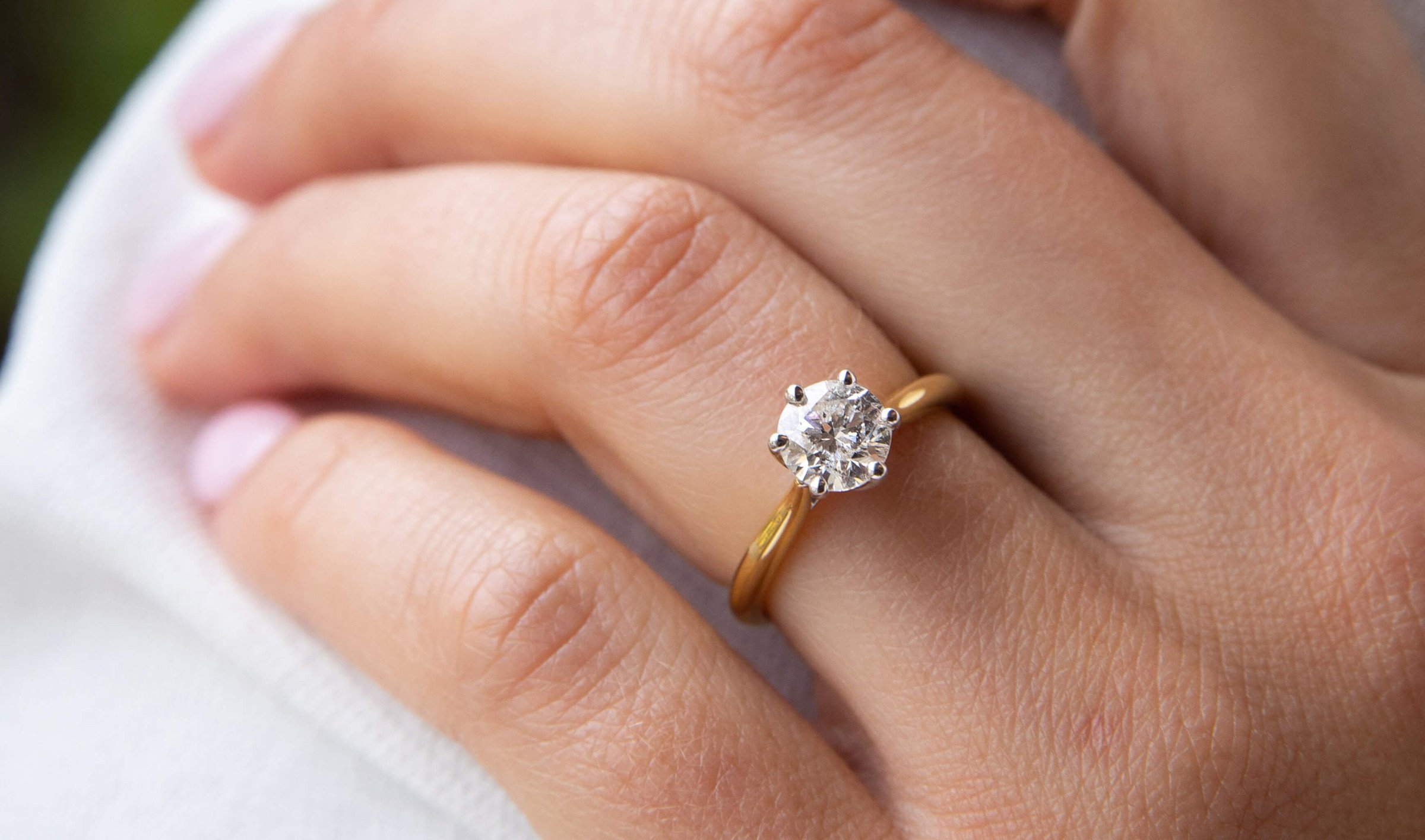When it comes to diamonds, size often seems to be the first thing people notice. But how big is your diamond, really? The answer isn’t as straightforward as you might think. Let’s dive into the glittering world of diamonds and explore what truly determines their size.
Understanding Diamond Carat
Before anything else, we need to clear up one major point: the carat. Carat weight is the standard unit of measurement for diamonds. One carat equals 200 milligrams. It’s easy to assume that carat weight directly correlates to size, but that’s only part of the story.
The Four Cs of Diamonds
To really understand a diamond’s size, you need to consider the Four Cs: Carat Weight, Cut, Color, and Clarity. Each of these factors plays a significant role in how big and brilliant a diamond appears.
Carat Weight
Carat weight is simply how much a diamond weighs. The heavier the diamond, the higher the carat weight. However, weight doesn’t always mean size. Two diamonds of the same carat weight can look different in size depending on their cut.
Cut
Cut is about how well a diamond’s facets interact with light. It’s arguably the most important factor in determining a diamond’s beauty. A well-cut diamond will sparkle brilliantly, making it appear larger than its actual carat weight might suggest.
Color
Diamonds come in a variety of colors, but the most valuable are usually the ones with the least color. Color can affect how light passes through the diamond, impacting its overall brilliance and perceived size.
Clarity
Clarity refers to the presence of internal or external imperfections, known as inclusions and blemishes. A diamond with fewer imperfections will reflect light better and can appear larger.
Carat Weight vs. Diamond Size
So, how does carat weight compare to actual size? While carat is a measure of weight, size refers to the dimensions of the diamond—its length, width, and depth. For example, a one-carat diamond can look smaller or larger depending on its shape and cut quality.
Factors Affecting Diamond Size Perception
There are several factors that can influence how big a diamond looks, even if they have the same carat weight.
Diamond Shape
The shape of a diamond affects its perceived size. Round diamonds tend to look smaller per carat compared to shapes like oval, marquise, or pear, which have elongated forms that maximize surface area.
Diamond Cut Quality
A well-cut diamond will have ideal proportions and excellent symmetry, making it look larger and more brilliant. Poor cut quality can make a diamond appear smaller and less lively.
Setting Style
The way a diamond is set in a ring or other jewelry can also influence its appearance. Settings like halos or bezel can make a diamond look bigger by adding extra metal or smaller stones around the main diamond.
Finger Size and Diamond Proportion
The size of the wearer’s finger can also impact how large a diamond looks. A one-carat diamond will appear larger on a smaller finger and smaller on a larger finger. Proportion is key in creating a balanced and aesthetically pleasing look.
Popular Diamond Shapes and Their Sizes
Different diamond shapes offer various looks and size perceptions. Here are a few popular ones:
Round Cut Diamonds
Round cut diamonds are the most popular and have the best sparkle. However, they tend to appear smaller per carat compared to other shapes because a significant portion of the rough diamond is cut away to achieve the round shape.
Princess Cut Diamonds
Princess cut diamonds are square-shaped and known for their brilliant sparkle. They often appear larger than round diamonds of the same carat weight because they have a larger surface area.
Oval Cut Diamonds
Oval cut diamonds are similar to round cuts in brilliance but appear larger due to their elongated shape. They are a great option for those wanting a bigger-looking diamond without increasing carat weight.
Marquise Cut Diamonds
Marquise cut diamonds have a unique boat-like shape that maximizes carat weight. Their long, narrow shape can make them look much larger than round diamonds of the same carat weight.
How to Choose the Right Diamond Size for You
Choosing the right lab made diamonds size involves considering several personal factors.
Personal Style and Preference
Your personal style plays a huge role. Do you prefer a classic, understated look, or are you drawn to bold, statement pieces? Your preference will guide you in choosing the right size and shape.
Budget Considerations
Budget is always a factor. Larger diamonds with higher carat weights are more expensive. Balancing carat weight with the other Cs can help you get the best value for your budget.
Occasion and Purpose
Consider the occasion and purpose of the diamond. Is it for an engagement ring, a special anniversary, or a fashionable accessory? The purpose can influence the size and quality you choose.
Caring for Your Diamond
Maintaining your diamond’s brilliance and appearance is crucial.
Regular Cleaning
Diamonds can collect dirt and oil, which dulls their sparkle. Regular cleaning with a gentle solution can keep them looking their best.
Proper Storage
Store your diamond jewelry separately to avoid scratches. Soft pouches or individual compartments in a jewelry box work well.
Professional Maintenance
Regular professional check-ups can ensure your diamond is secure in its setting and retains its beauty over time.
Conclusion
So, how big is your diamond? It’s a blend of carat weight, cut, shape, and personal preference. Understanding these factors will help you choose a diamond that looks stunning and meets your desires. Remember, bigger isn’t always better. The right diamond is the one that brings joy to you.
